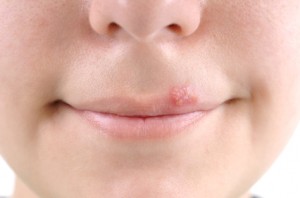Use a cotton swab to dab on the vinegar to the sore several times a day. Create a paste out of crushed or chopped garlic and apply it to your cold sore for 15 minutes. Dab on some milk. The follow up with aloe will help to soothe the irritated sore and relieve any pain the salt caused. This can be done at the onset when you realize a sore might be starting up as well. This classic antibacterial works to simultaneously kill bacteria that may infect the blister while drying out the skin in the area. Tea tree oil may be used as an effective topical antiviral. Tromantadine works by changing the surface composition of skin cells. Although a slight sting-inducer, salt applied directly to your fever blister will help to speed up the healing process. You can also try drinking licorice tea daily, though that doesn’t seem as effective as topical treatment.
One of the more random natural remedies for cold sores that you can use is licorice. Love it or hate it, the solution can be an effective cold sore remedy. The nutrients and antioxidants in green tea work wonders on soothing cold sores and increasing the speed at which they heal. Make a cup of green tea, and then use the tea bag placed directly on the cold sore after cooling. Try apple cider vinegar. Glycyrhizic acid, an ingredient in licorice root, has been shown in some studies to stop the virus cells in their nasty little tracks-or at least counteract the symptoms of them. Dab on some salt. Apply an ample amount of the jelly to the sore to keep it covered up and moist at all times. It disinfects, healing up speeding, and makes it hard for the surfaced sore to spread or worsen. This is thanks to its anti-inflammatory and anti-viral properties. The vinegar works to dry out the blister, kill bacteria, and even out the pH of the sore. The antibacterial properties of the garlic will help to disinfect the area and increase the healing time. For an extra bit of relief, refrigerate or freeze the tea bag before placing it on your fever blister. Be sure to do this with a clean q-tip or freshly washed hands to prevent the further spread of bacteria from your fingers to the blister. Pour a little onto the sore or use a cotton pad to swipe some on multiple times daily. Anyone who had a parent that put hydrogen peroxide on a scrape knows that it’s not exactly pleasant.

